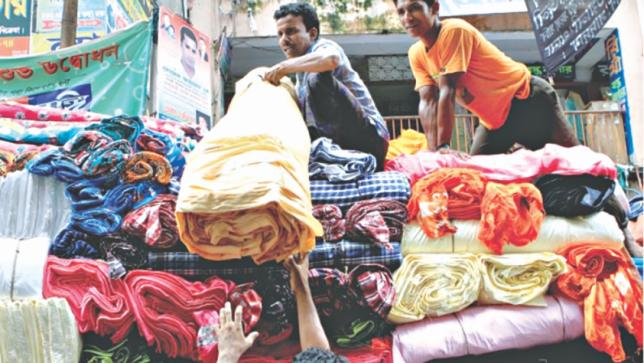Textile sector needs Tk 10,000cr investment

Bangladesh needs Tk 10,000 crore additional investments in the primary textile sector to reduce its import dependence for fabrics for the export-oriented garment sector.
For instance, in 2018 Bangladeshi garment exporters imported 5.52 lakh tonnes of fabrics worth Tk 33,156 crore, according to data from the National Board of Revenue and Bangladesh Textile Mills Association (BTMA).
“As we cannot meet the full demand, China and India fill in the gap,” said BTMA President Mohammad Ali Khokon.
The local textile millers can supply 4 billion metres of fabrics, so Bangladesh imports 6 billion metres of fabrics from China and 3 billion metres from India.
Currently, the local textile millers can meet 85 percent of the demand from the knitwear sector and 35 percent from the woven sector, according to data from the BTMA.
“We need to build another 20 big textile mills which will be able to supply quality fabrics to the local garment exporters,” Khokon said, adding that it will take Tk 500 crore to set up each new textile mill.
The primary textile sector will be able to add more value in the garment sector, which typically rakes in more than 82 percent of the export receipts in a year.
“We want a textile palli (village) as the government has been establishing 100 special economic zones across the country.”
Khokon went on to outline some of the difficulties in attracting fresh investment to the sector: the high bank interest rate, scarcity of industrial land, no fresh gas connections and setting of effluent treatment plants (ETPs). If the investment is done in a textile palli under an economic zone there will not be a need to set up separate ETPs. “Only a central ETP is enough to serve the whole cluster of mills, thus reducing the cost of production.” The BTMA chief said the majority of investment in the textile sector has been taking place in the form of capacity expansion.
Although the local textile millers can supply quality fabrics the quantity is still low, said Siddiqur Rahman, president of the Bangladesh Garment Manufacturers and Exporters Association. “Every year Bangladesh needs to improve the capacity of its primary textile sector as the export of apparel items is also growing.”
If Bangladesh wants to hit $50 billion in garment export receipts by 2021, the local textile millers will have to supply more. “The increased supply of local raw materials also decreases the lead time, which is very important in this competitive apparel business worldwide,” Rahman added.
